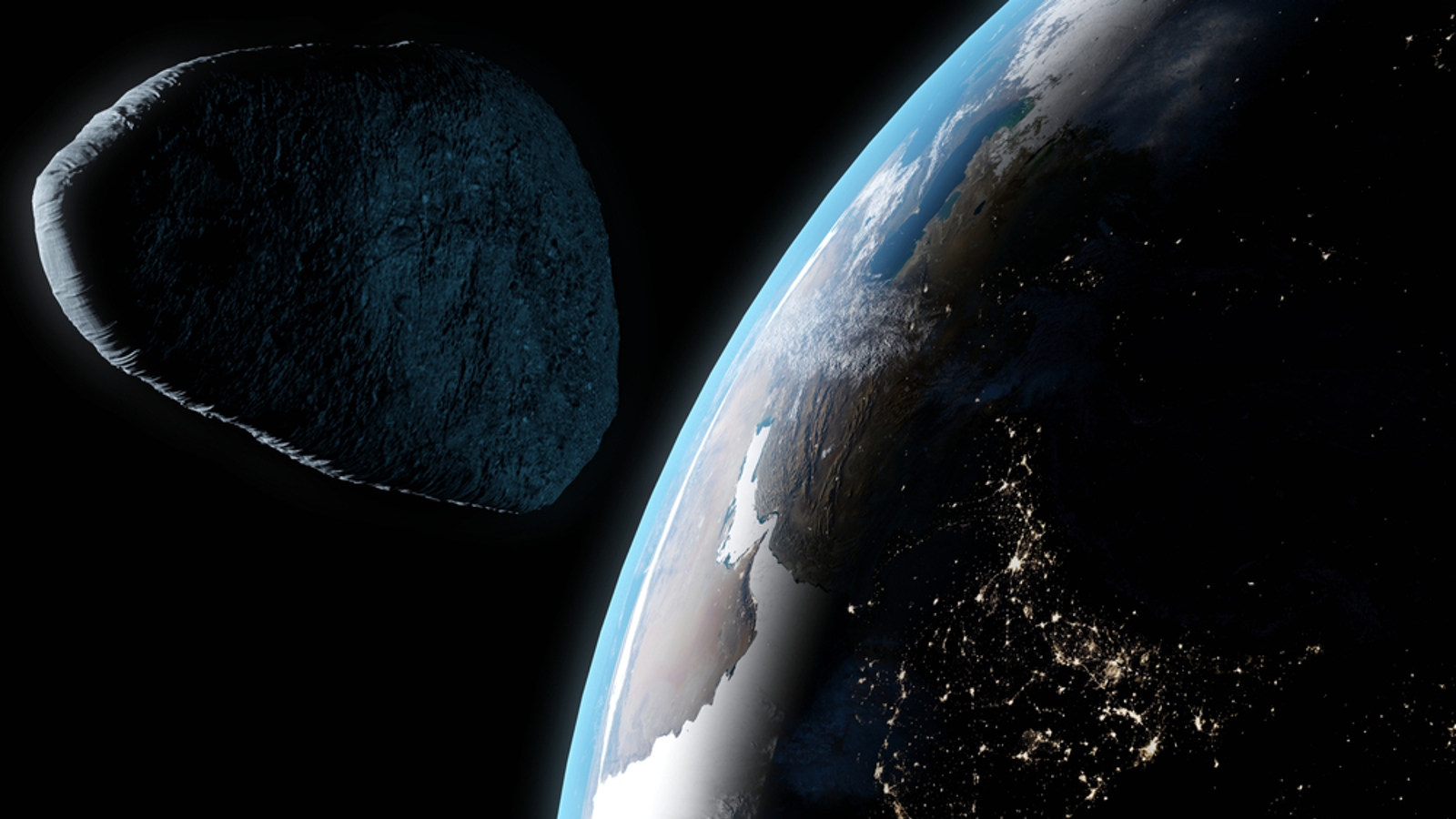Zero chance of potential city-killer asteroid 'Apophis' smashing into Earth in 2029, new study confirms
Computer simulations reveal that the close flyby of Apophis, the "God of Chaos" asteroid, in 2029 still poses no risk to Earth, even when a worrying, previously unrecognized factor is taken into account.

There is almost zero chance that the infamous city-killer asteroid "Apophis" will hit Earth when it zips closely past our planet in 2029 — even when a previously unconsidered factor is taken into account, a new study shows.
Apophis is a peanut-shaped space rock spanning around 1,100 feet (340 meters) across that was left behind by the formation of the solar system around 4.6 billion years ago. The chunky space rock is not hefty enough to be considered a "planet killer" asteroid but is large enough to wipe out a large city. It is named after Apep, the Egyptian serpent god of darkness and disorder, which has earned the space rock the nickname "God of Chaos."
The "potentially hazardous" asteroid first made headlines around 20 years ago, when it was revealed the space rock would have an extremely close fly-by with Earth in 2029 and could potentially hit our planet. However, follow-up observations revealed that Apophis, which last made a close approach to Earth in 2021, will sail safely past our planet at a distance of around 23,200 miles (37,400 kilometers) — less than one-tenth the distance between Earth and the moon. The asteroid's current trajectory also suggests it is highly unlikely to pose a threat to Earth in the next few centuries.
However, a new study has factored in previously unconsidered variables — namely, the asteroid being nudged off its current course by a collision with another space rock and then hurtling towards Earth. It was uploaded March 1 to the preprint database arXiv and has been accepted for future publication in the Planetary Science Journal.
"We calculated the paths of all known asteroids using a detailed computer simulation of our solar system and the possibility of such an unlikely event was evaluated," lead study author Paul Wiegart, an astronomer at Western University in London, Canada, said in a statement. "Fortunately, no such collisions are anticipated."
Related: 'Planet killer' asteroids are hiding in the sun's glare. Can we stop them in time?

The new study arose from "a possible risk that a deflection from its current trajectory [caused by a collision with another asteroid] may move Apophis closer to impacting us," study co-author Benjamin Hyatt, an astronomer at Waterloo University in Canada, said in the statement.
Sign up for the Live Science daily newsletter now
Get the world’s most fascinating discoveries delivered straight to your inbox.
Scientists saw something similar in 2022, when NASA's DART spacecraft smashed into the asteroid Dimorphos, successfully altering the space rock's trajectory through the solar system and completely altering its shape.
"Hypothetically, another asteroid colliding with Apophis could cause such a deflection, motivating us to study this scenario however unlikely it may be," Hyatt said.
But the new simulations showed this would not be the case. The closest Apophis will get to another asteroid before 2029 is in 2026, when it will pass by the 4,265-feet (1,300 m) wide asteroid Xanthus at a minimum distance of around 6,200 miles (10,000 km), the researchers wrote.
Even though Apophis poses no threat to Earth, scientists will still take a closer look at the hefty space rock in the future. The spacecraft formerly known as OSIRIS-REx, which collected a record-breaking sample from the asteroid Bennu and successfully delivered it to Earth last year, has now been redesignated as OSIRIS-APEX and been sent on a new mission to fly alongside Apophis in 2029 after it makes its closest approach to Earth.
Scientists hope that the probe will be able to shed light on how the intense gravitational forces of the asteroid's close brush with Earth will change its shape and structure, which could alter its chances of hitting us in the future.
"[Apophis] was the first credible threat from an asteroid to our planet,” Wiegert said. "Even now that we know it's on course to miss us by a safe margin, astronomers remain vigilant. It's the asteroid we just can't stop watching."

Harry is a U.K.-based senior staff writer at Live Science. He studied marine biology at the University of Exeter before training to become a journalist. He covers a wide range of topics including space exploration, planetary science, space weather, climate change, animal behavior and paleontology. His recent work on the solar maximum won "best space submission" at the 2024 Aerospace Media Awards and was shortlisted in the "top scoop" category at the NCTJ Awards for Excellence in 2023. He also writes Live Science's weekly Earth from space series.










